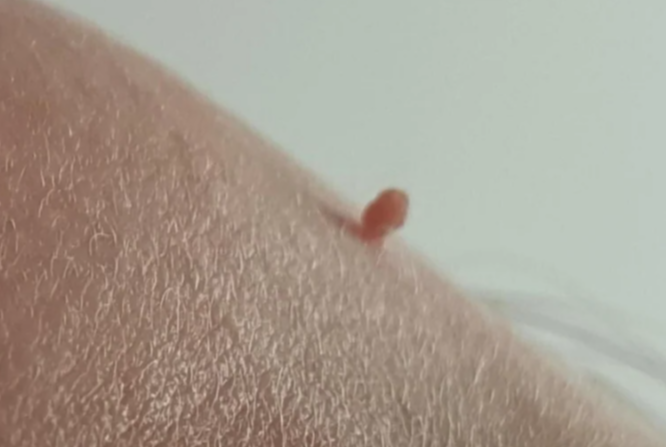Acrochordon, also known as skin tags, is a common benign polyp that develops in skin folds in middle-aged and older individuals. The ICD-10 code for acrochordon is L91.8.
They occur in people over the age of 30 and are more common in women than in men. Approximately 25% of the adult population has at least one soft fibroma. Predisposing factors for their development include obesity and overweight. It has been noted that acrochordons are common in pregnant and menopausal women. There may be a family history of multiple acrochordons. An association between acrochordons and intestinal polyps has been reported, but subsequent research has not confirmed this. Multiple acrochordons are found in patients with acromegaly and are often associated with acanthosis nigricans. Soft fibromas are part of Birt-Hogg-Dube syndrome, which also includes trichodiscomas and fibrofolliculomas of the face, neck, and chest.Acrochordons manifest as round or oval soft, non-elastic nodules on a stalk, compressed at the base. Their diameter varies from 0.5 to 10 mm, and their color is typically normal skin color, yellow-brown, or dark brown. They are most commonly found on the neck (on the lateral surface) and in major folds (axillary, groin, folds beneath the breasts), but they can also occur on the face, back, chest, and eyelids. Most patients with soft fibromas have only a few lesions. Over time, fibromas increase in number and size. They are often associated with seborrheic keratosis. If the lesions are not bothersome, they persist indefinitely.
Due to their location, acrochordons can be irritated by friction, jewelry, or clothing. It can become painful if traumatized, twisted, torn, or thrombosed, causing them to turn black and/or become hemorrhagic. Necrosis and self-amputation of the acrochordon may occur if the shaft is twisted.- Warts
- Nevus of Unna
- Seborrheic keratosis
- Neurofibroma
- Miescher's nevus
- Molluscum Contagiousum
- Basal cell nevus syndrome

